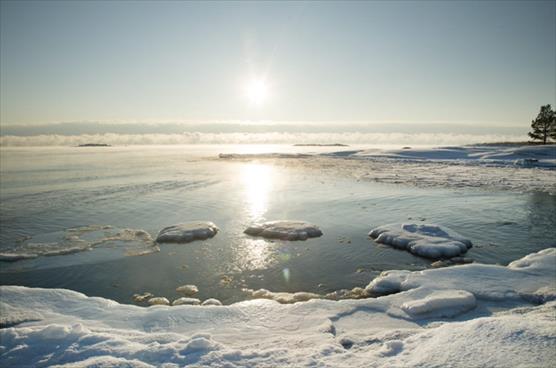
© Photo: Riku Lumiaro
Incomplete combustion of organic fuels results in emission of light-absorbing carbon (LAC) particles that contain both black carbon (BC), which has the strongest visible light absorption per unit mass and brown carbon (BrC). Both BC and BrC affect climate directly by absorbing solar radiation and indirectly by modifying cloud properties, for instance via cloud absorption effects that may lead to cloud heating and evaporation. Another important climate-forcing mechanism is their ability to affect snow and ice surfaces. The climate effects of BC depend significantly on the mixing state (i.e., externally or internally mixing with other aerosol species) and atmospheric aging by coating with secondary components induces BC absorption enhancement. BrC, on the other hand, is light-absorbing organic matter in atmospheric aerosols of various origins e.g., soil humics, humic-like substances (HULIS), tarry materials from combustion and bioaerosols. BrC comprises a wide range of poorly characterized compounds that exhibit highly variable absorptivities, with reported values spanning two orders of magnitude. Emission data for e.g global scale models are currently missing BrC as a compound.
The main objective of the project is to estimate the contributions of both BC and BrC to the radiative forcing of climate especially in Finland but also in a wider boreal context. The work packages include measurements and modelling work. The goal of the measurements is to estimate the contributions of both BC and BrC to light absorption in the uv-vis wavelength range 1) for urban and background aerosols in Finland in the past and at present, 2) in snow and precipitation, and 3) in aerosol emissions from different fuels (e.g. wood, oil, peat). An important specific goal is to study the optical properties of BC and BrC from peat fires. Information from the measurements, along with values found in existing literature, will be used to create BrC emission inventories and scenarios. In the final step, the emission data is used as input in climate modelling, with the goal to estimate the radiative forcing of BC and BrC in selected scenarios.
Further information:
Mikko Savolahti, Senior Research Scientist, Finnish Environment Institute SYKE, firstname.lastname@syke.fi
Air Pollution and Mitigation of Climate Change